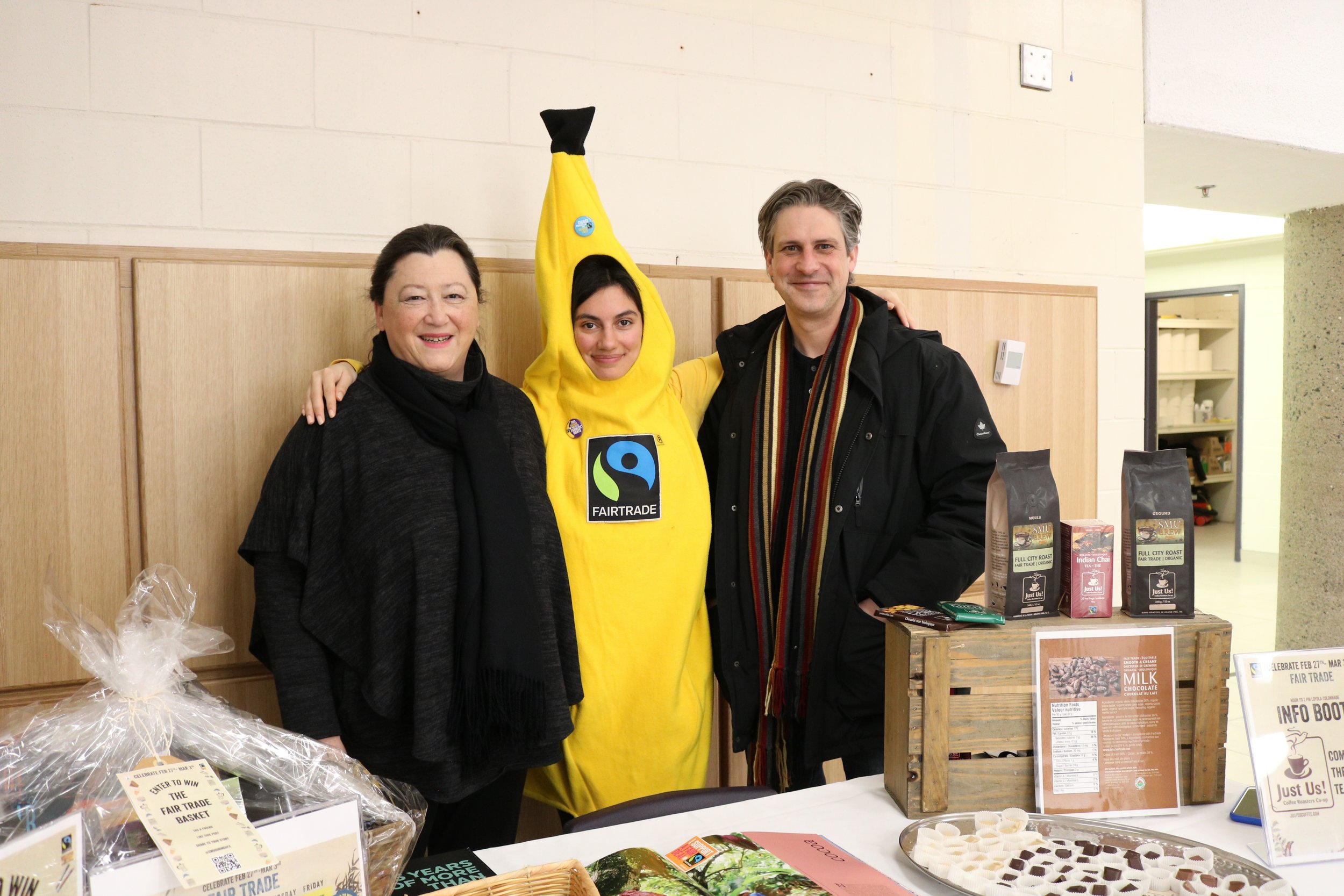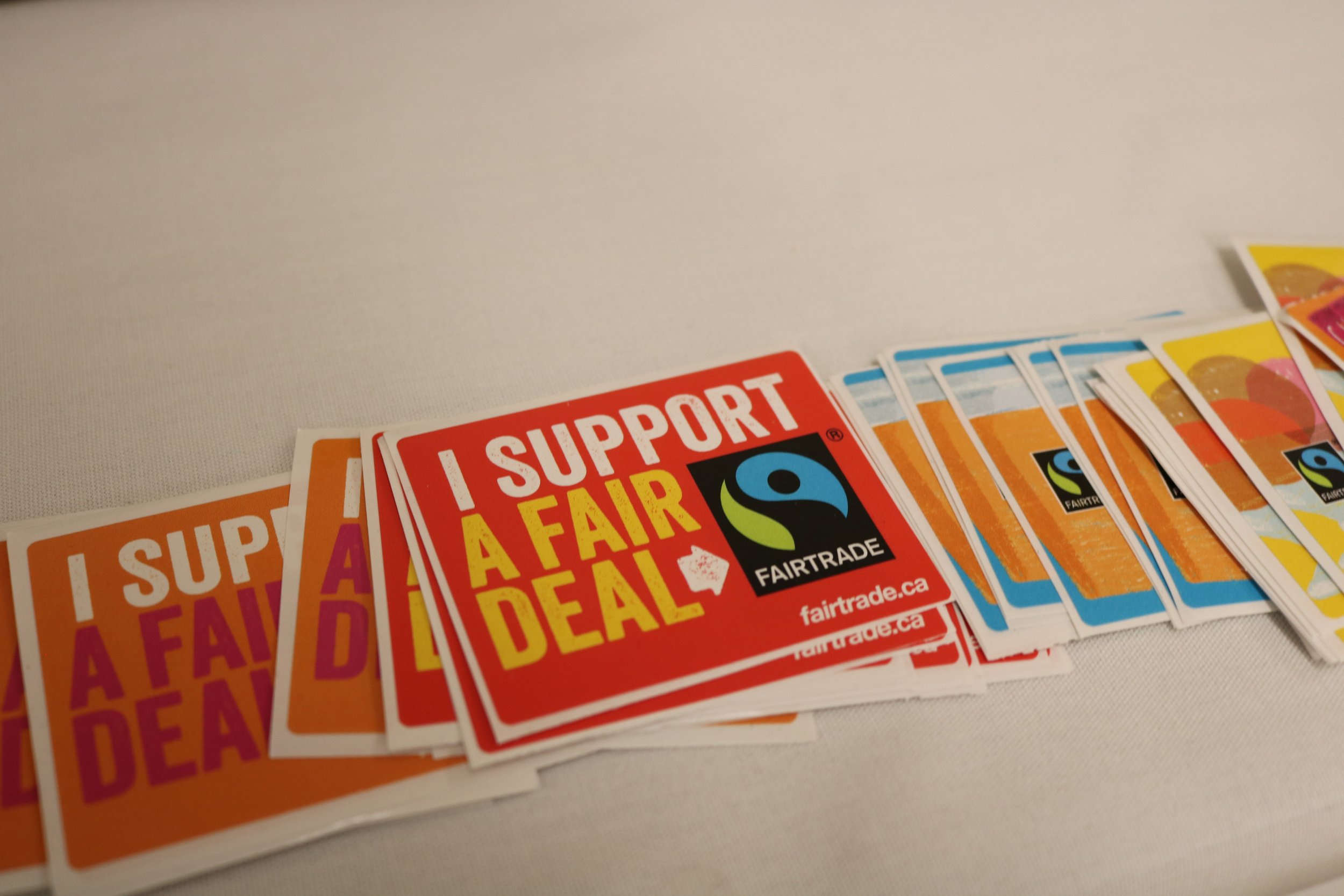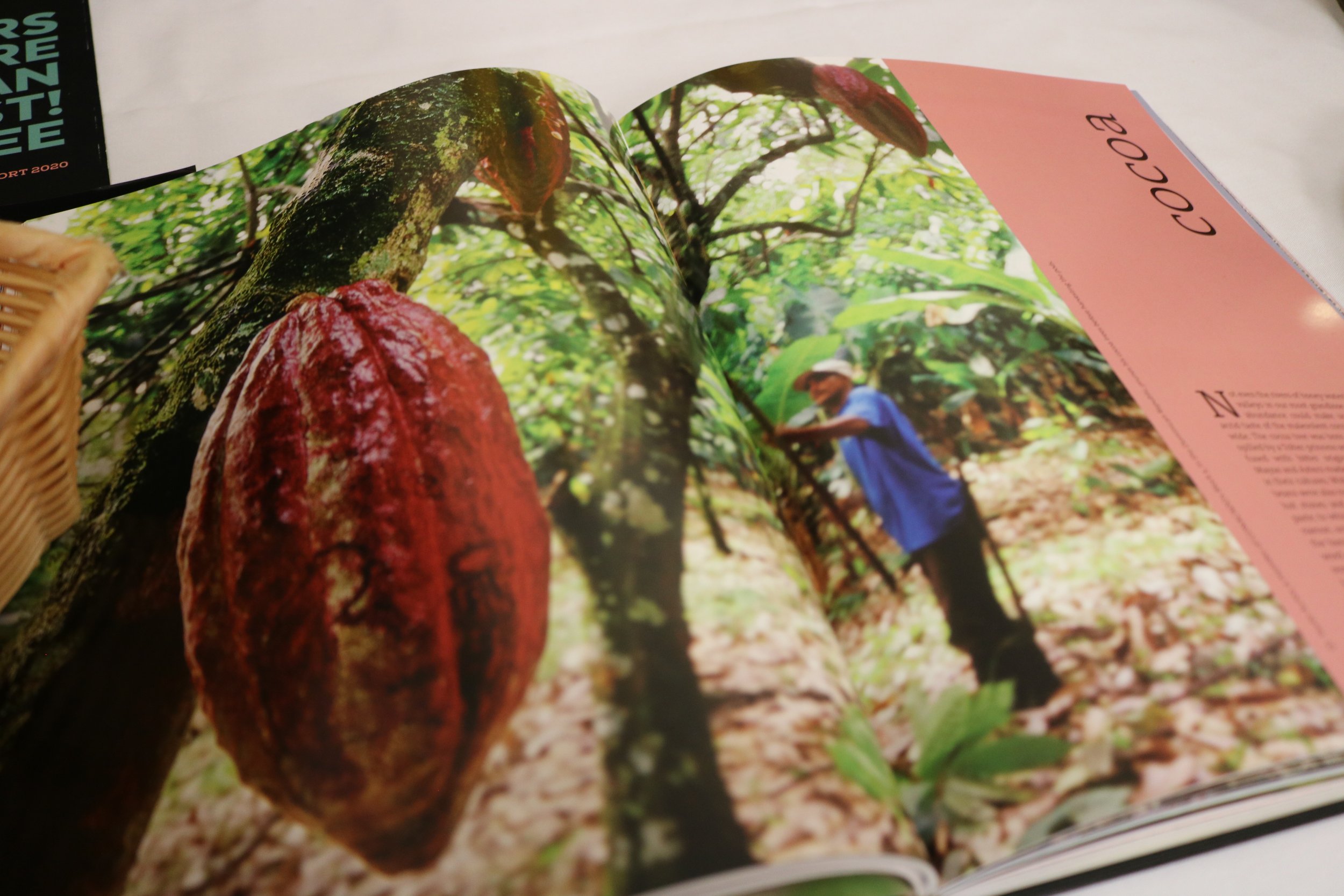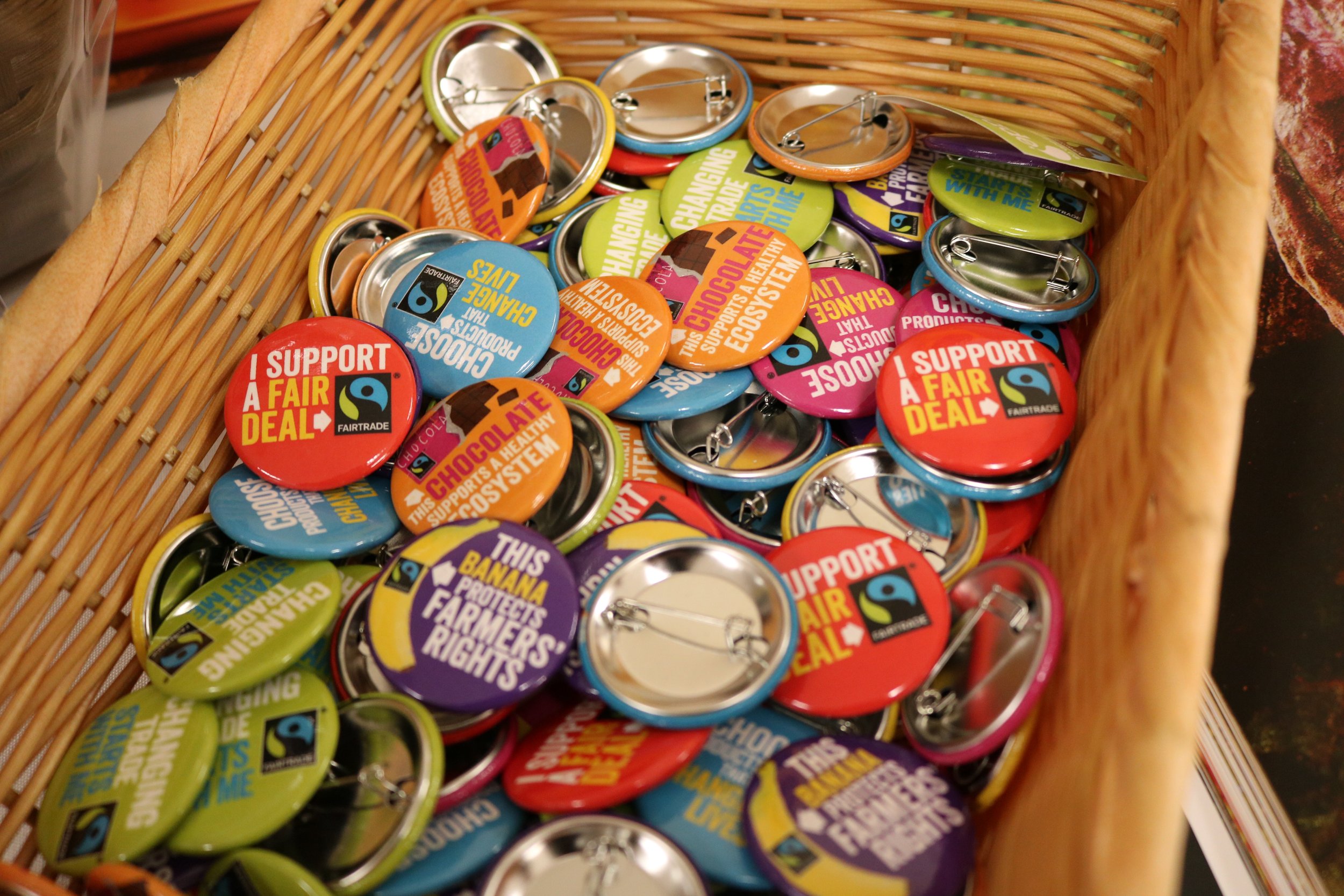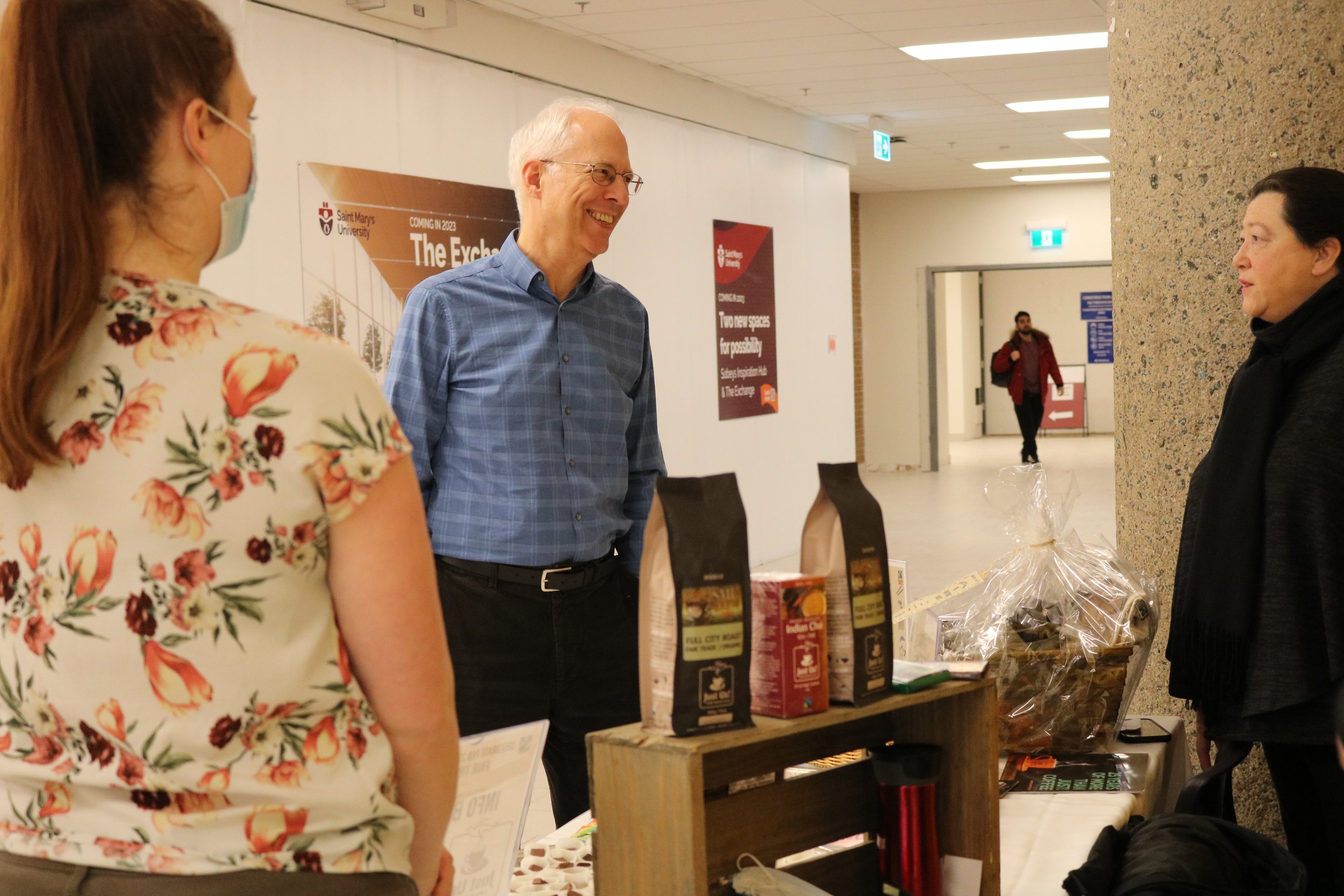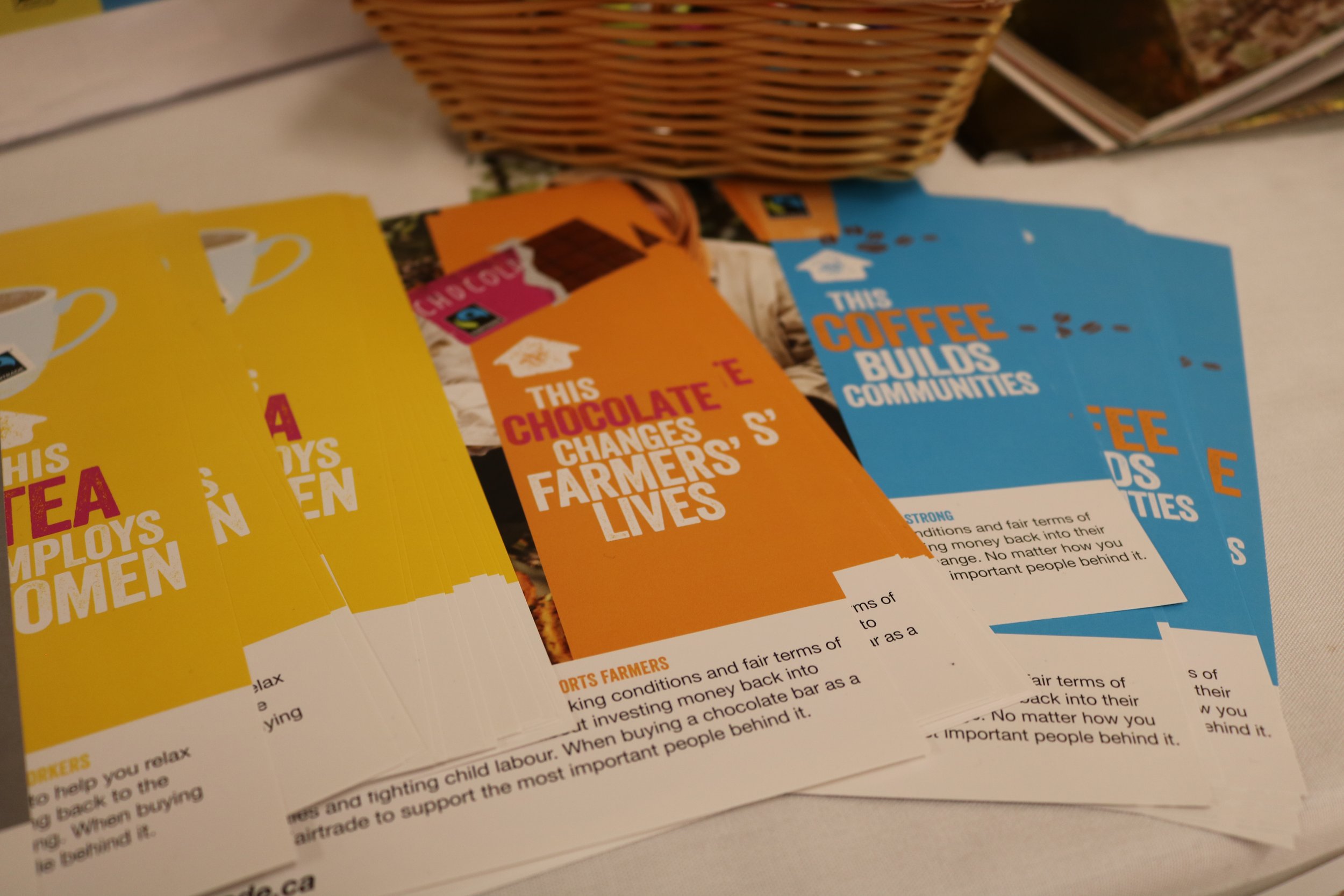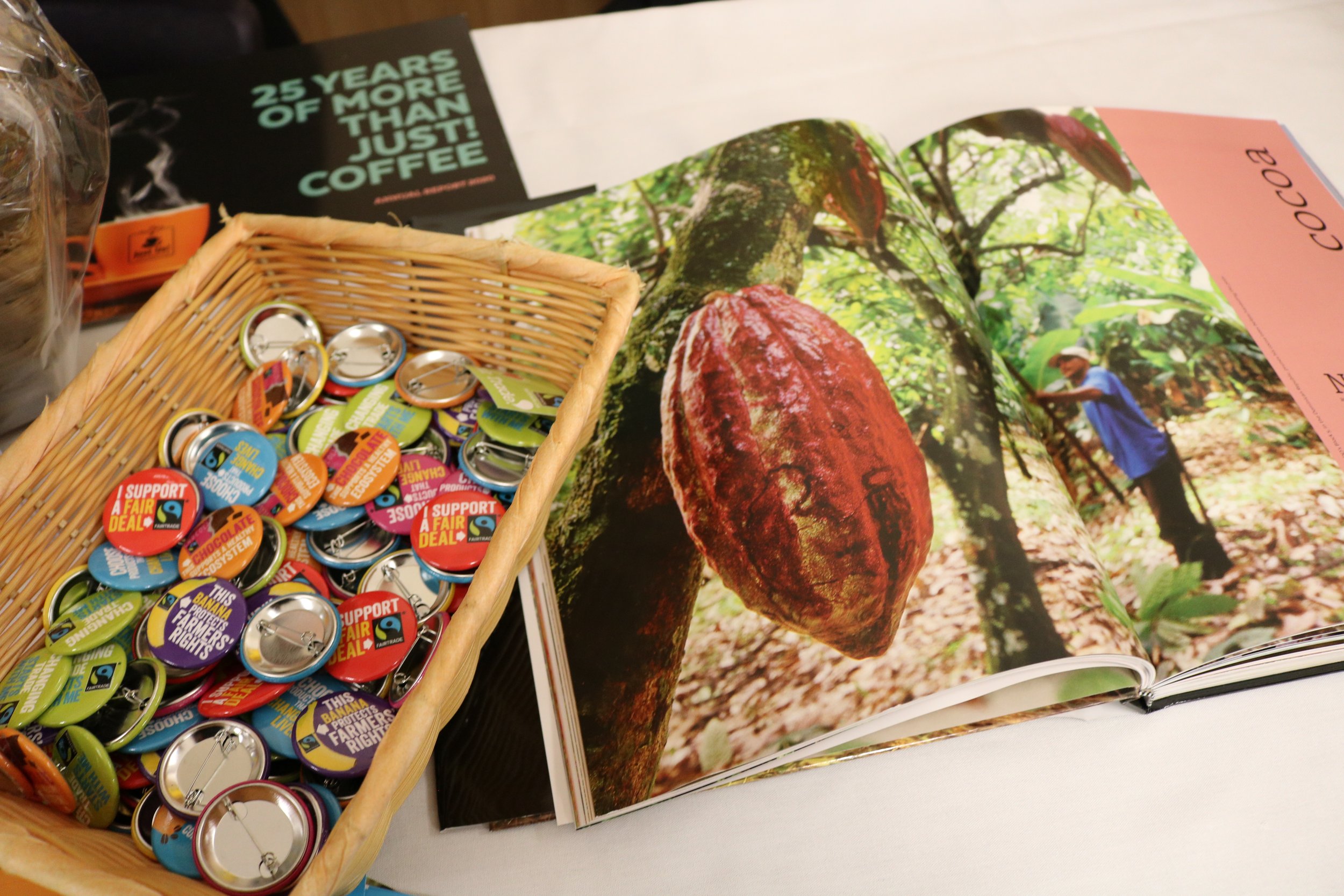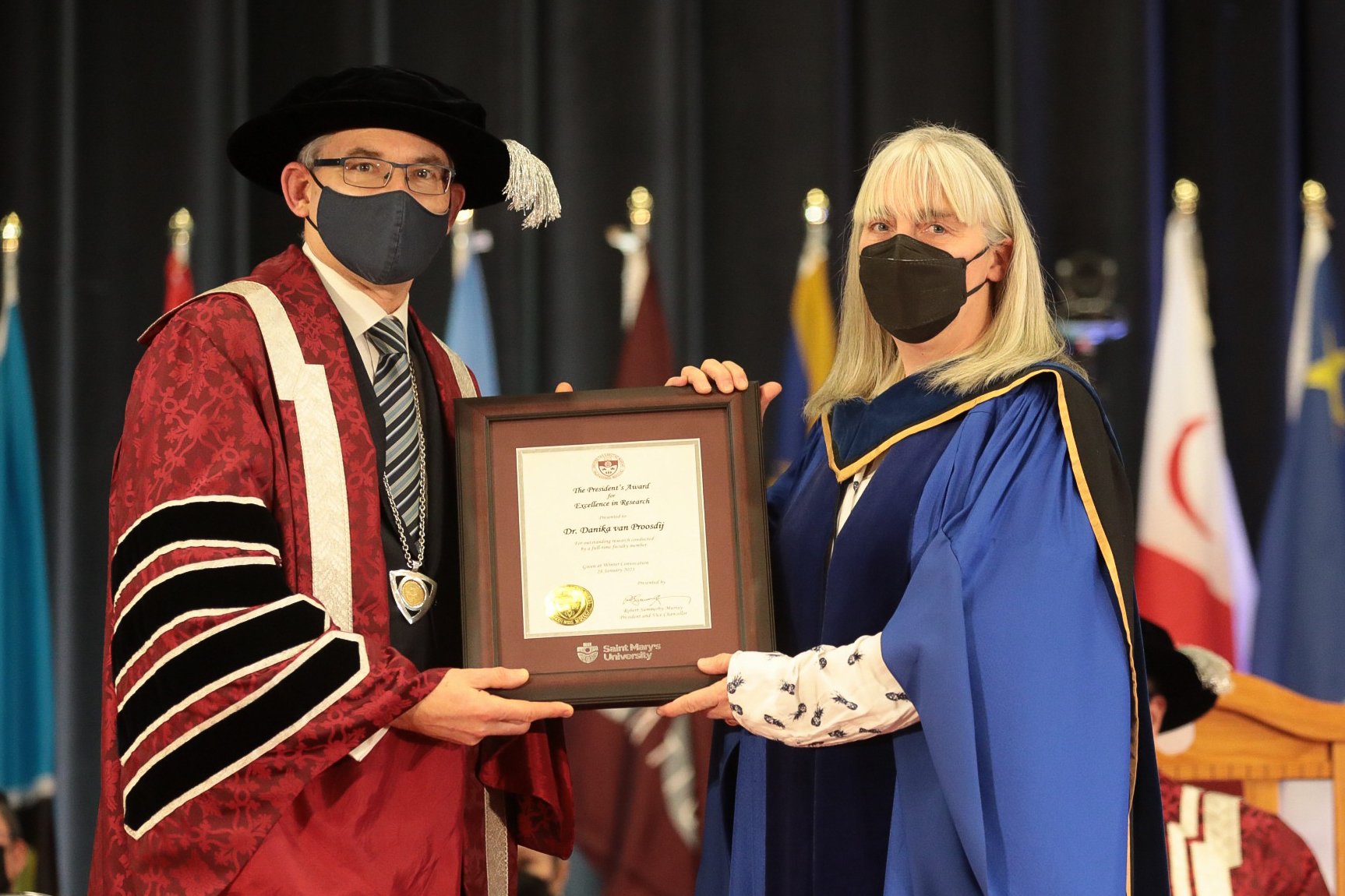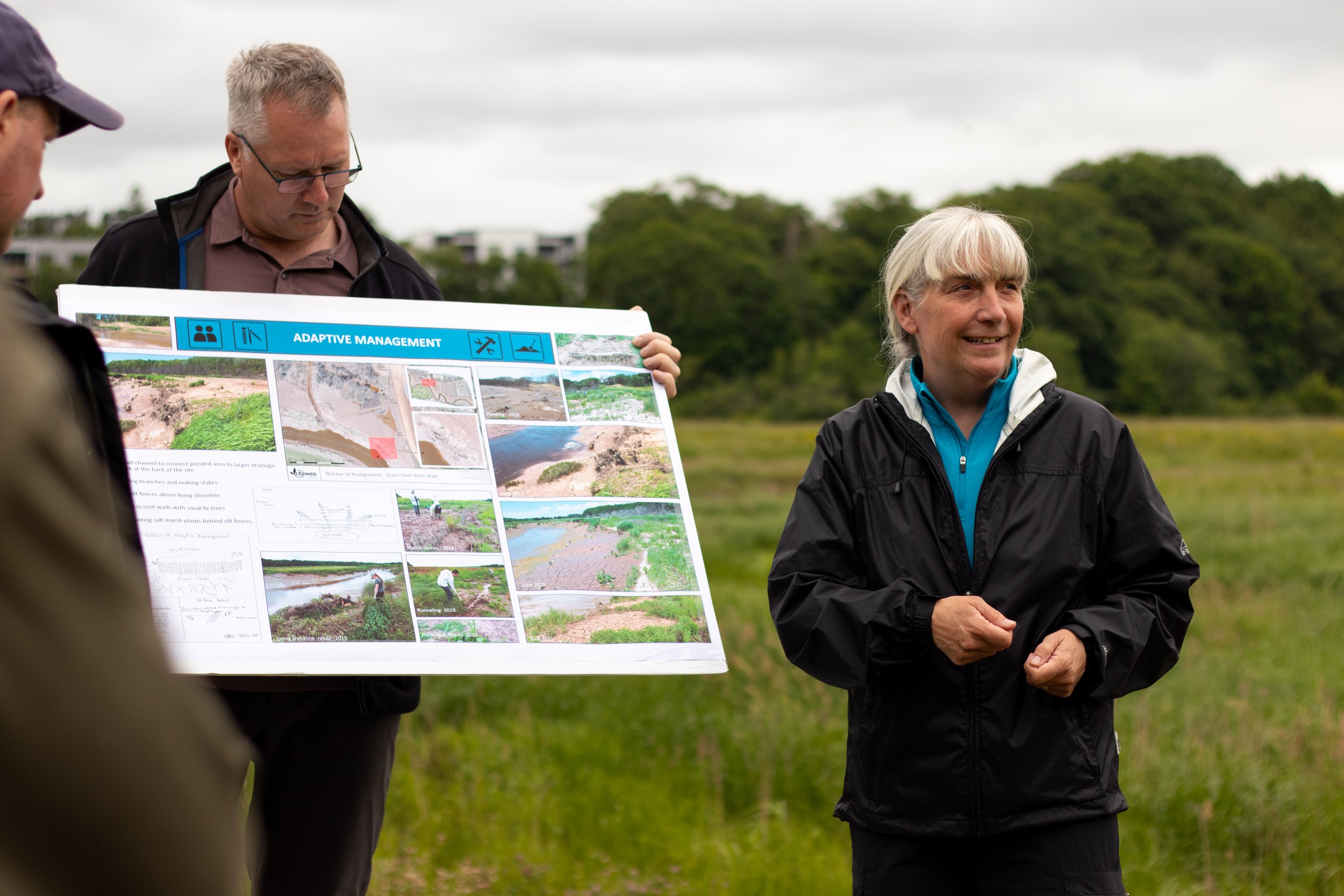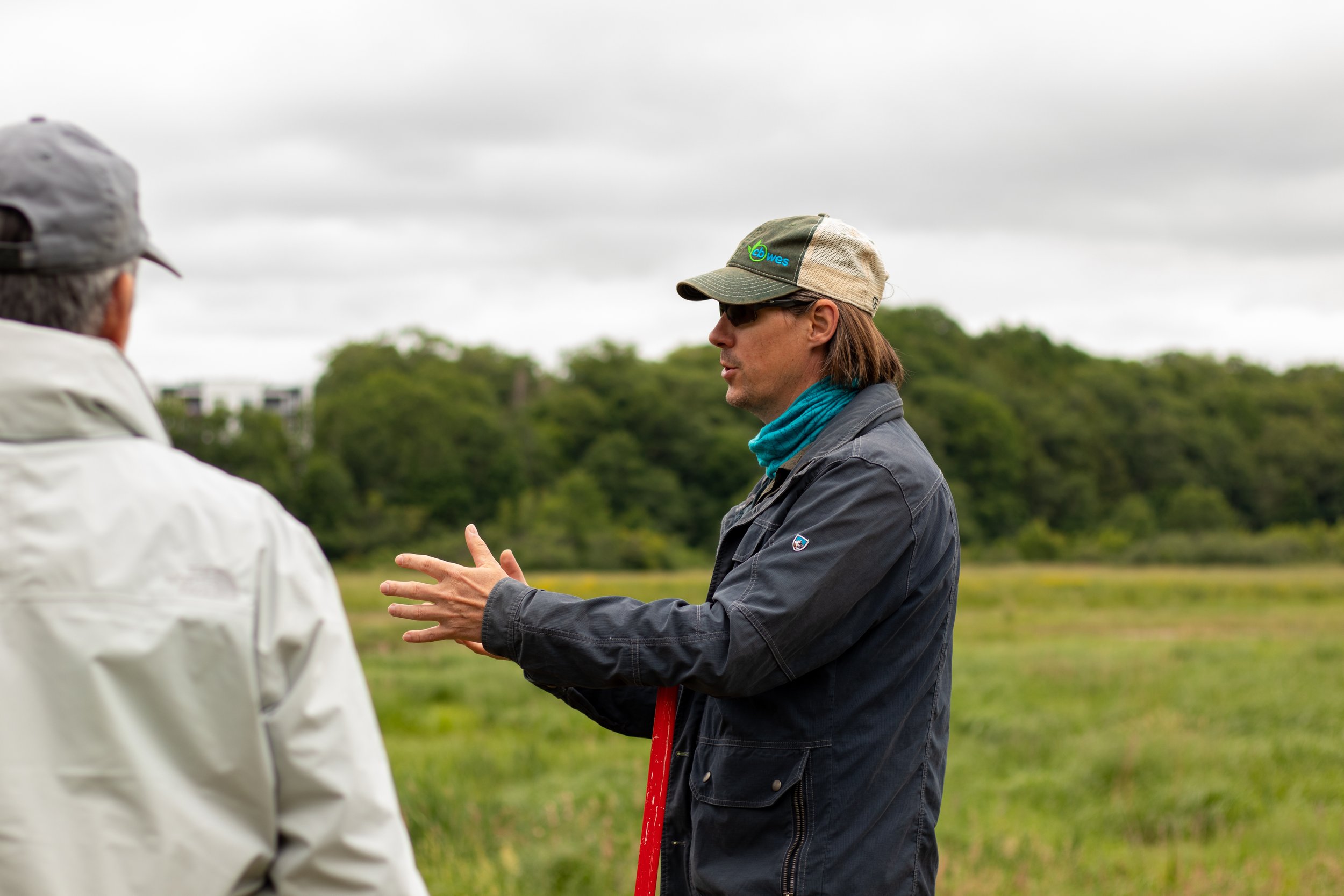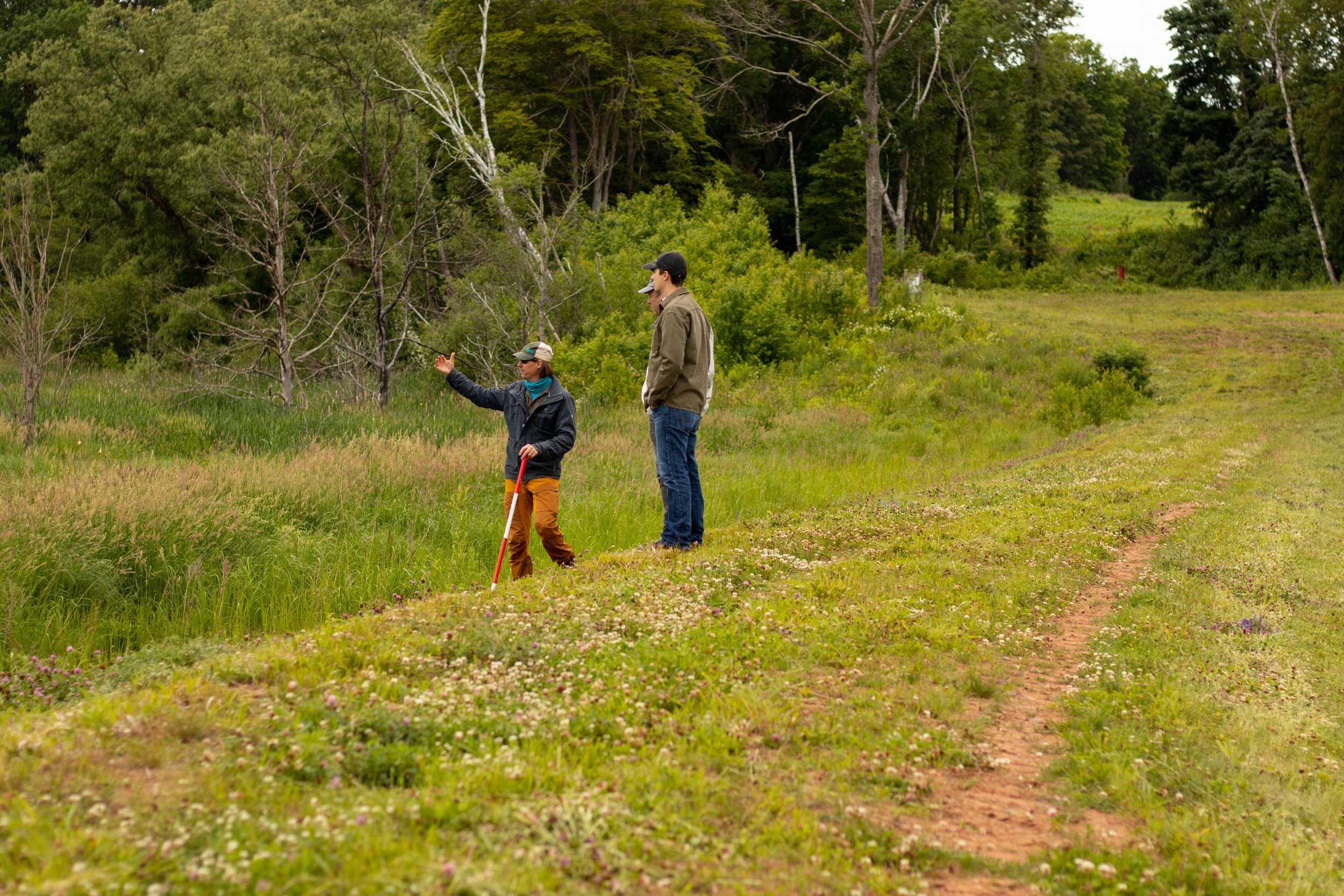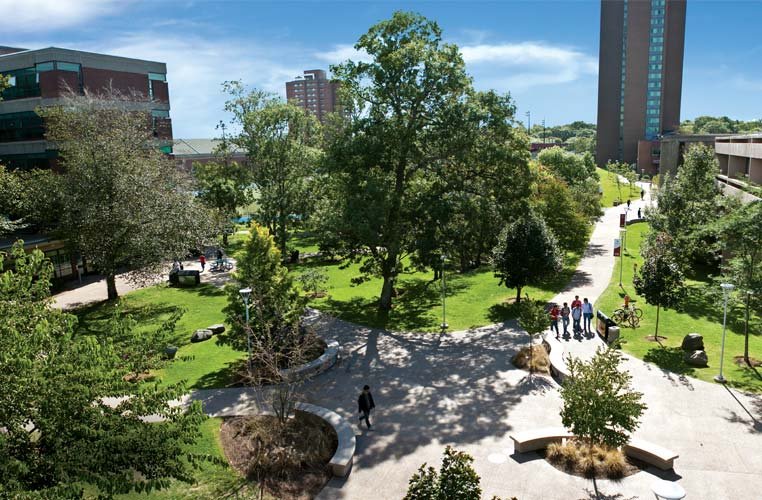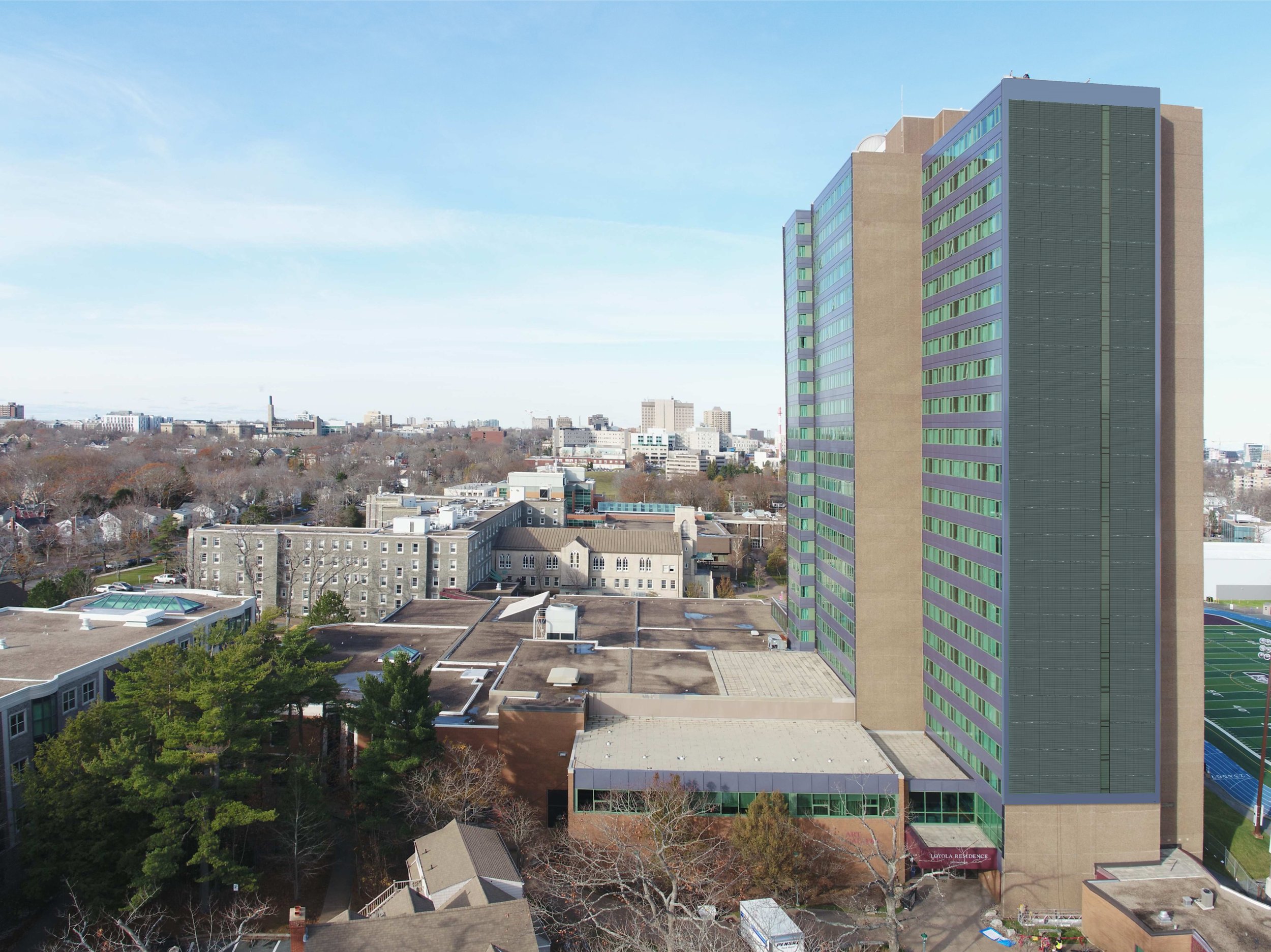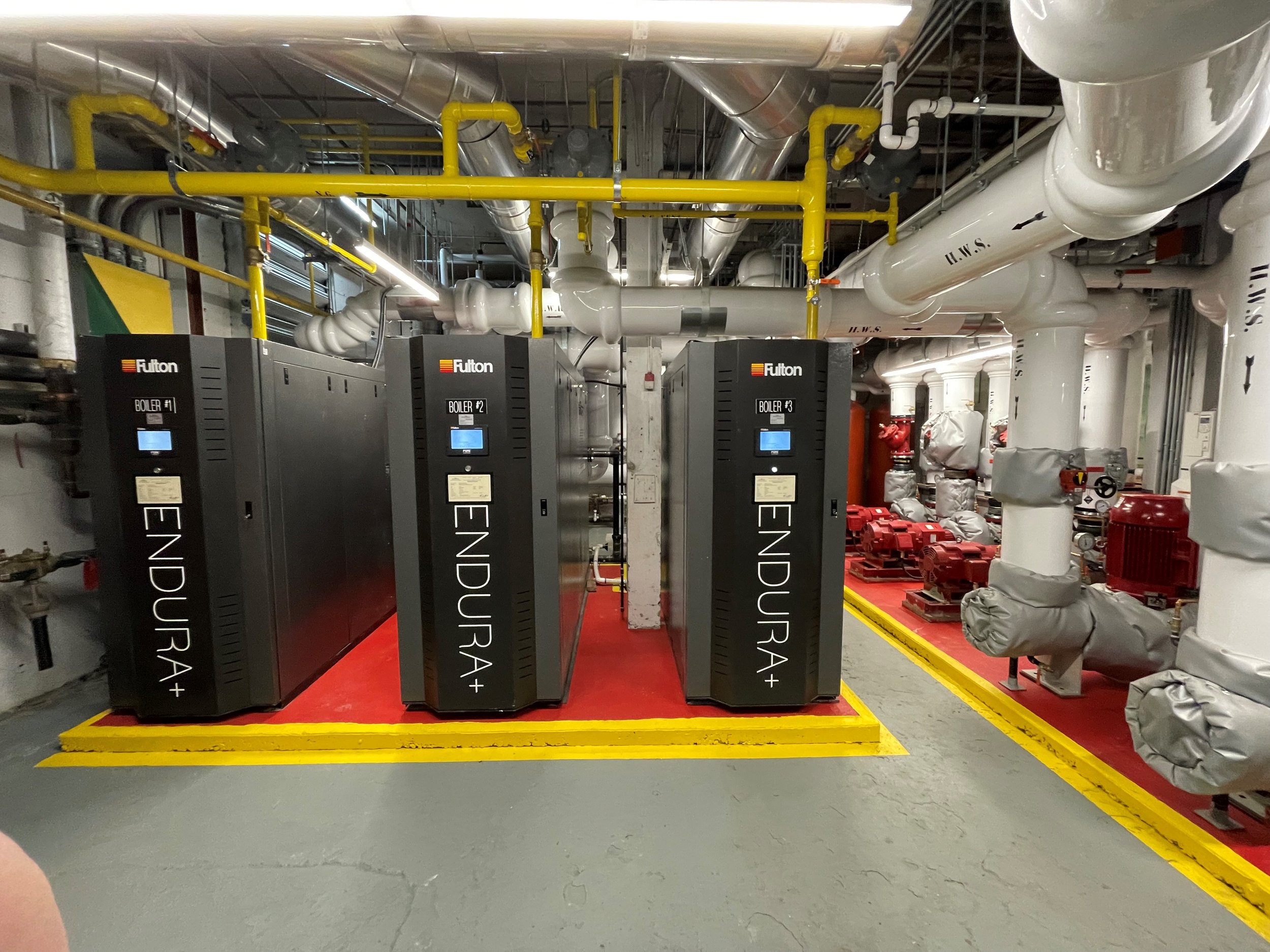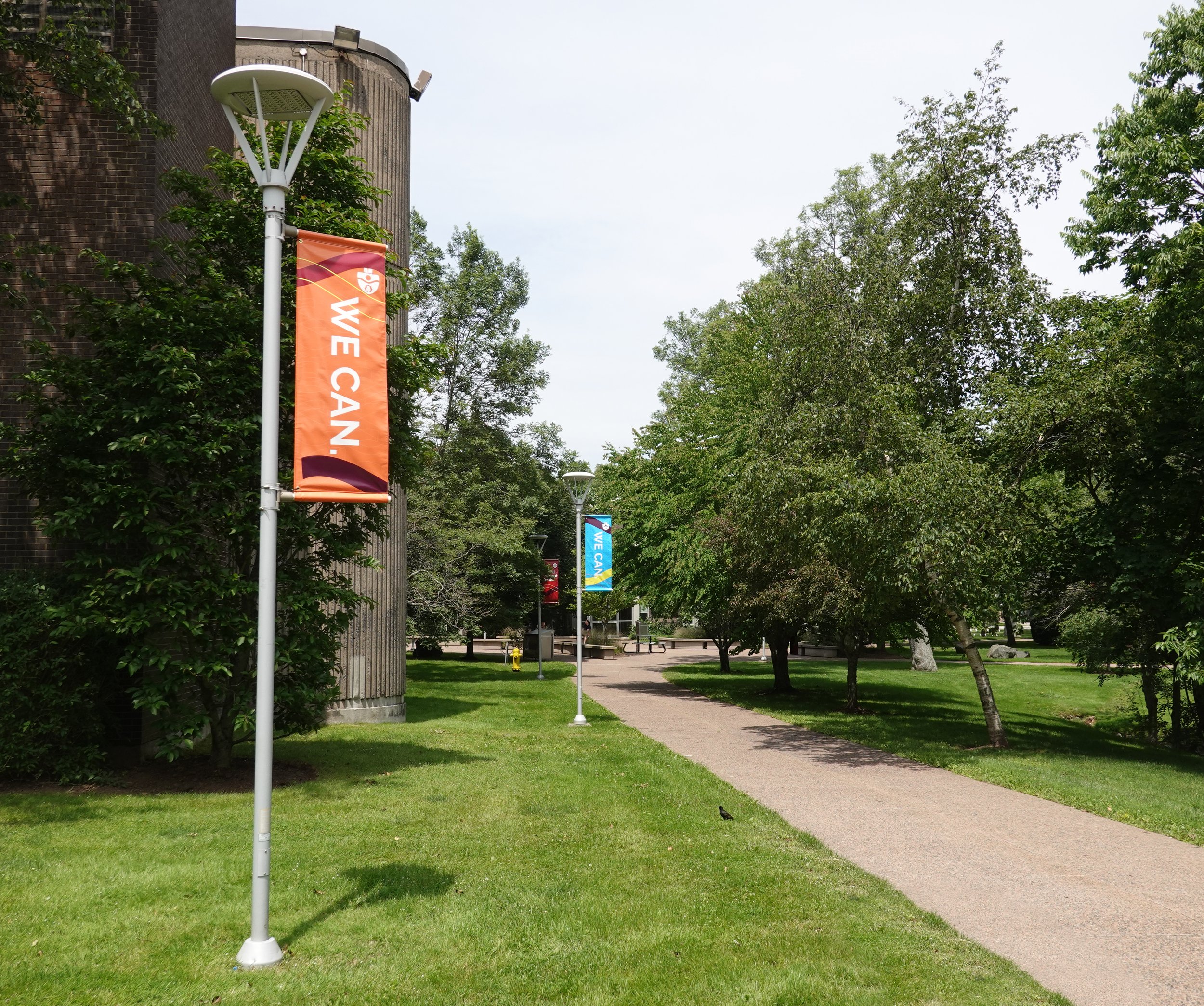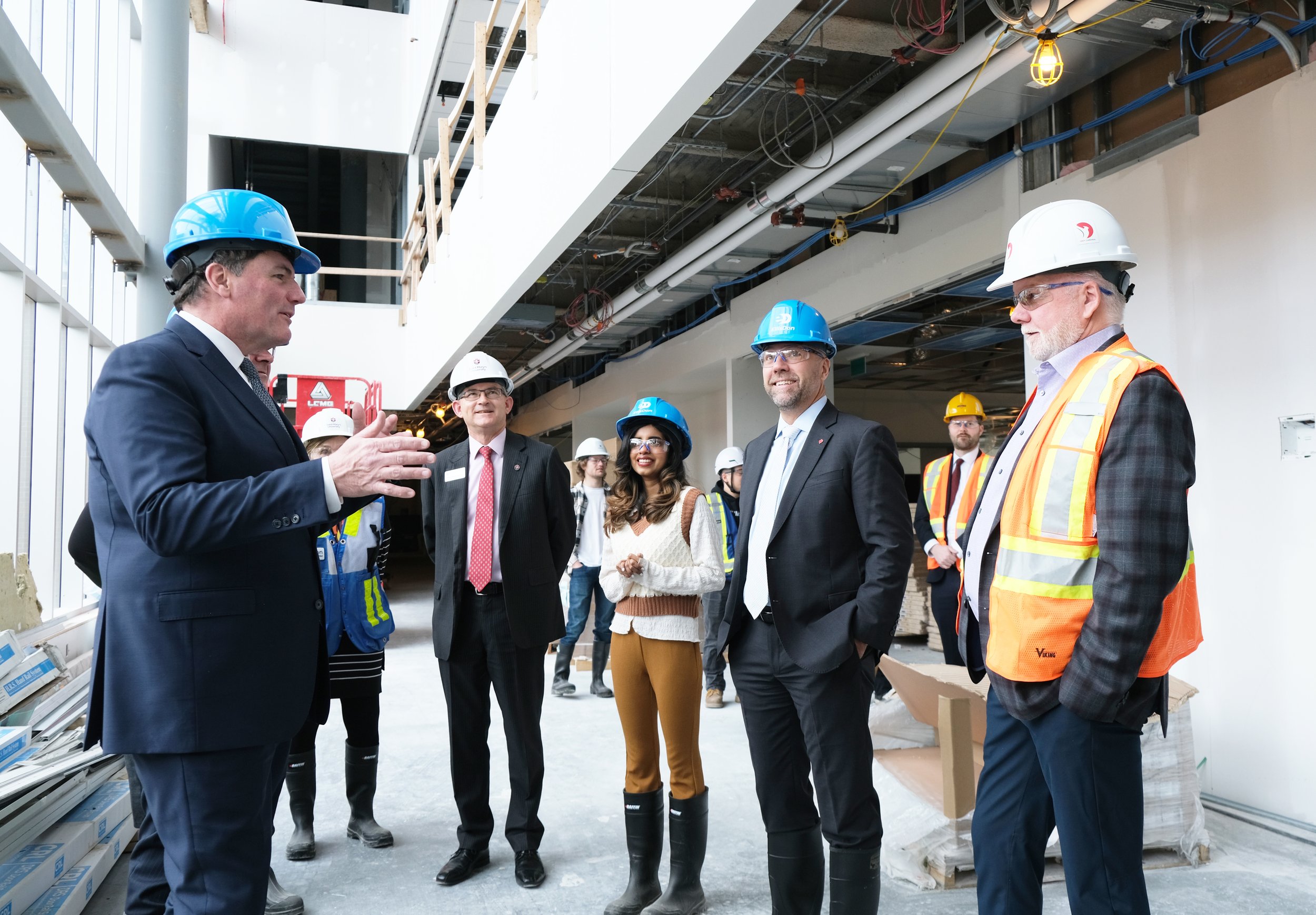

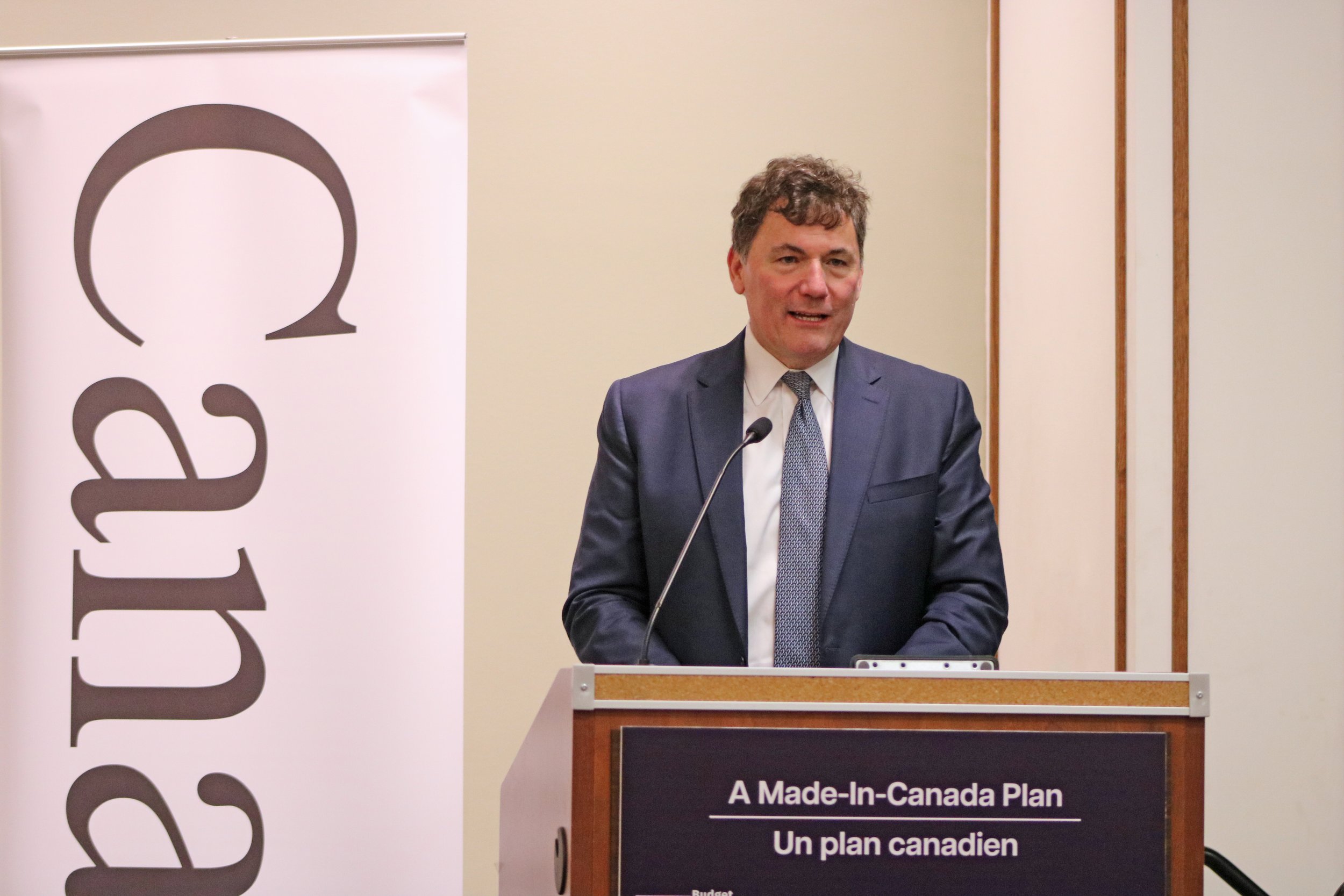
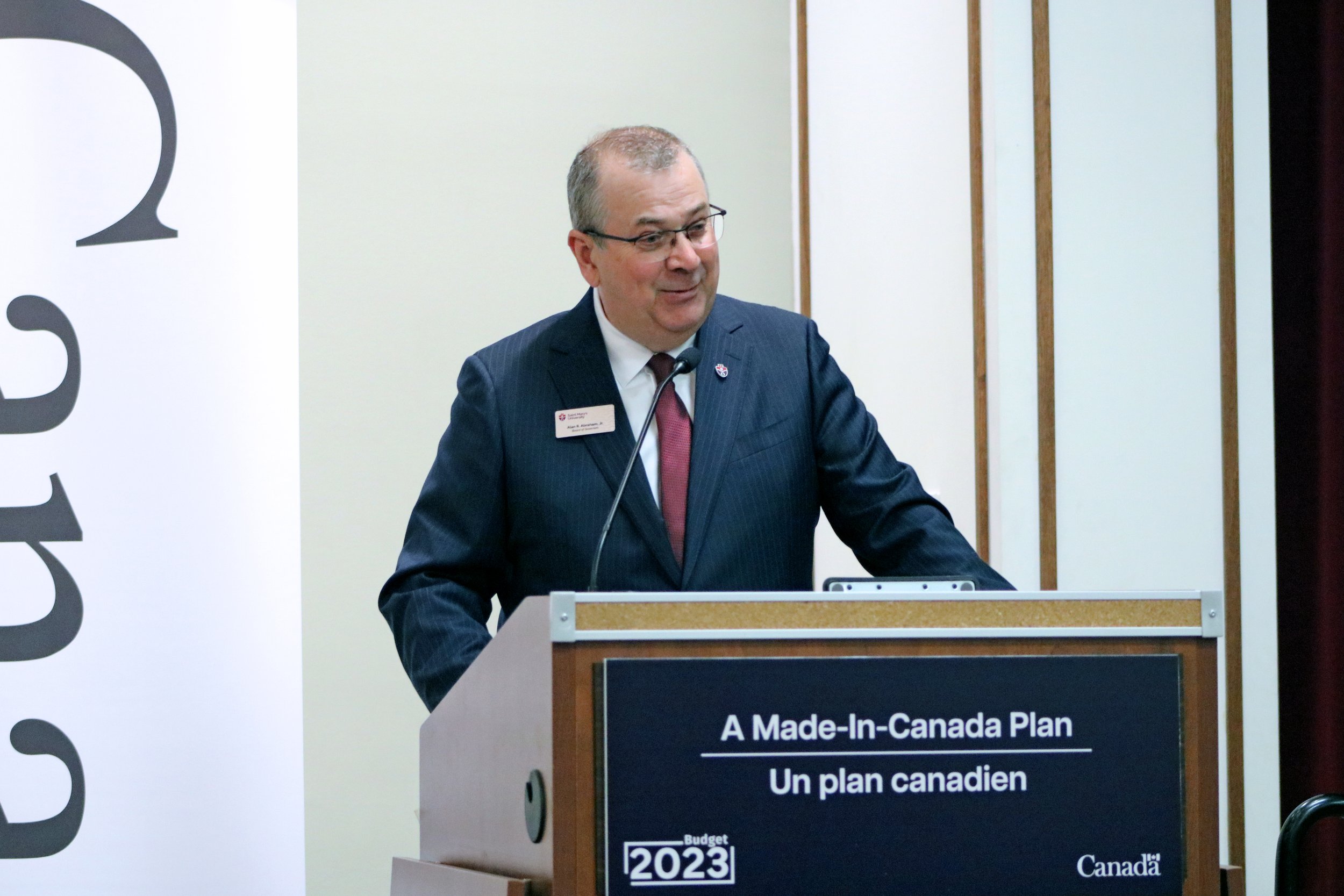
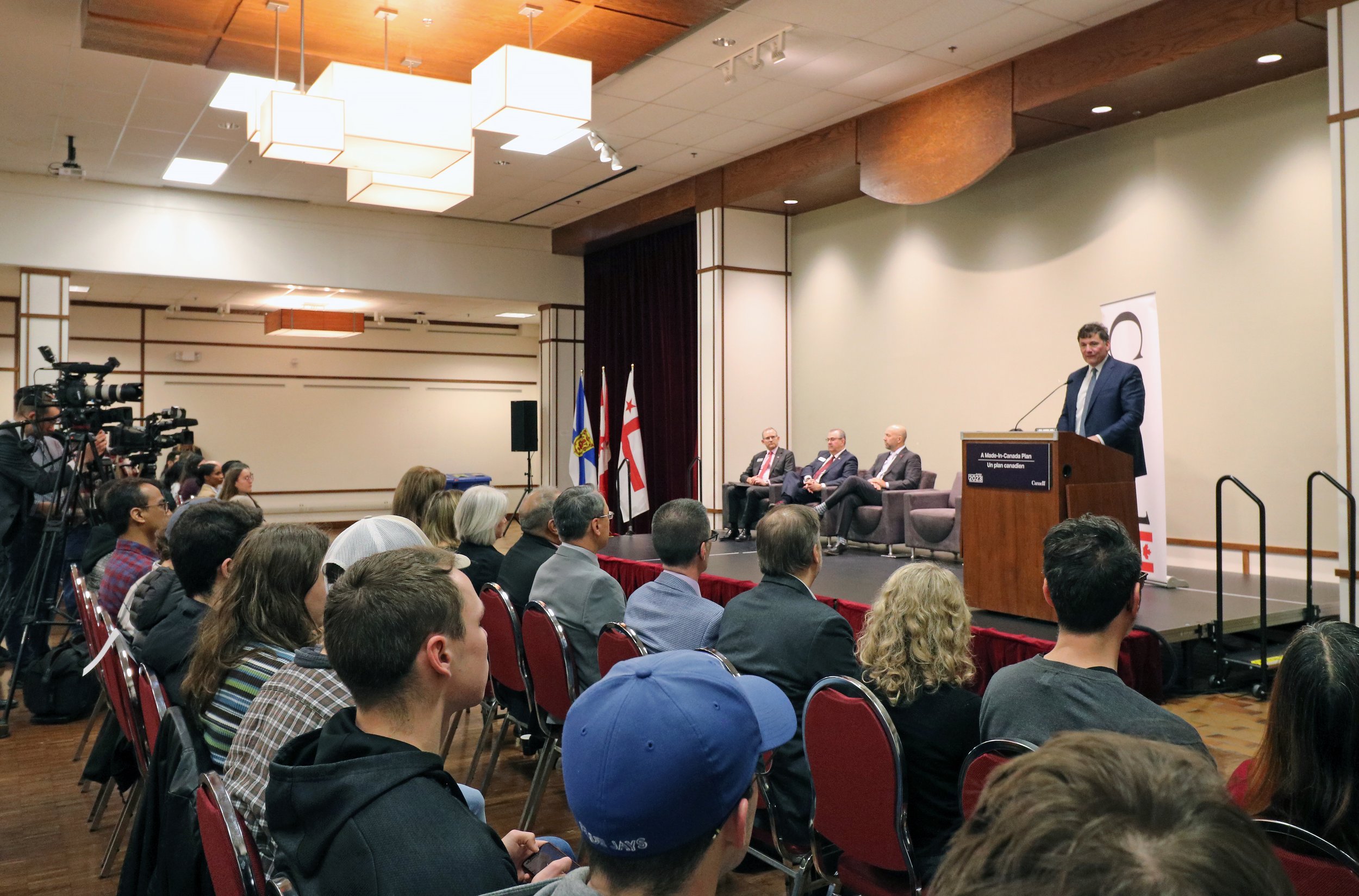
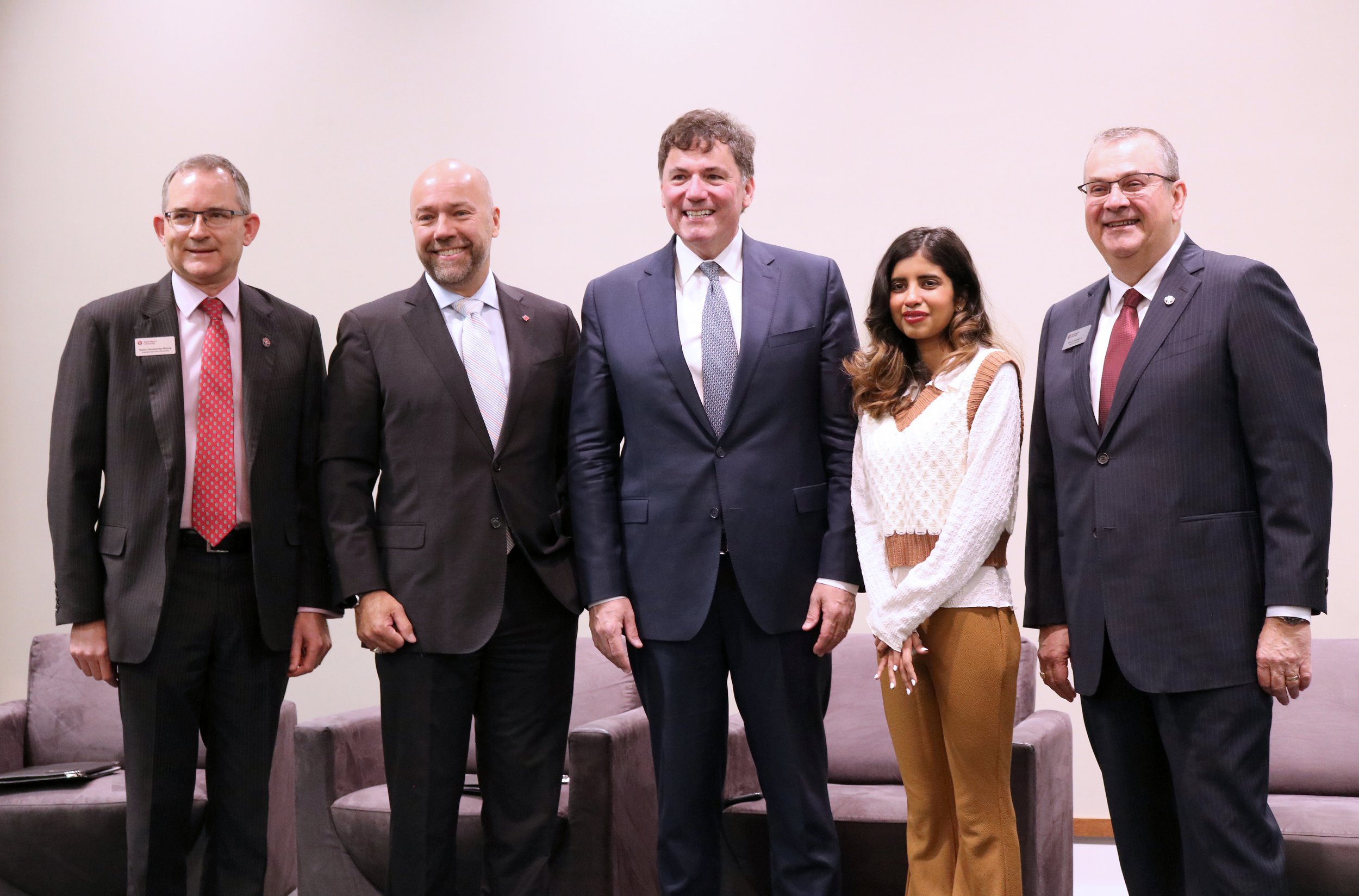
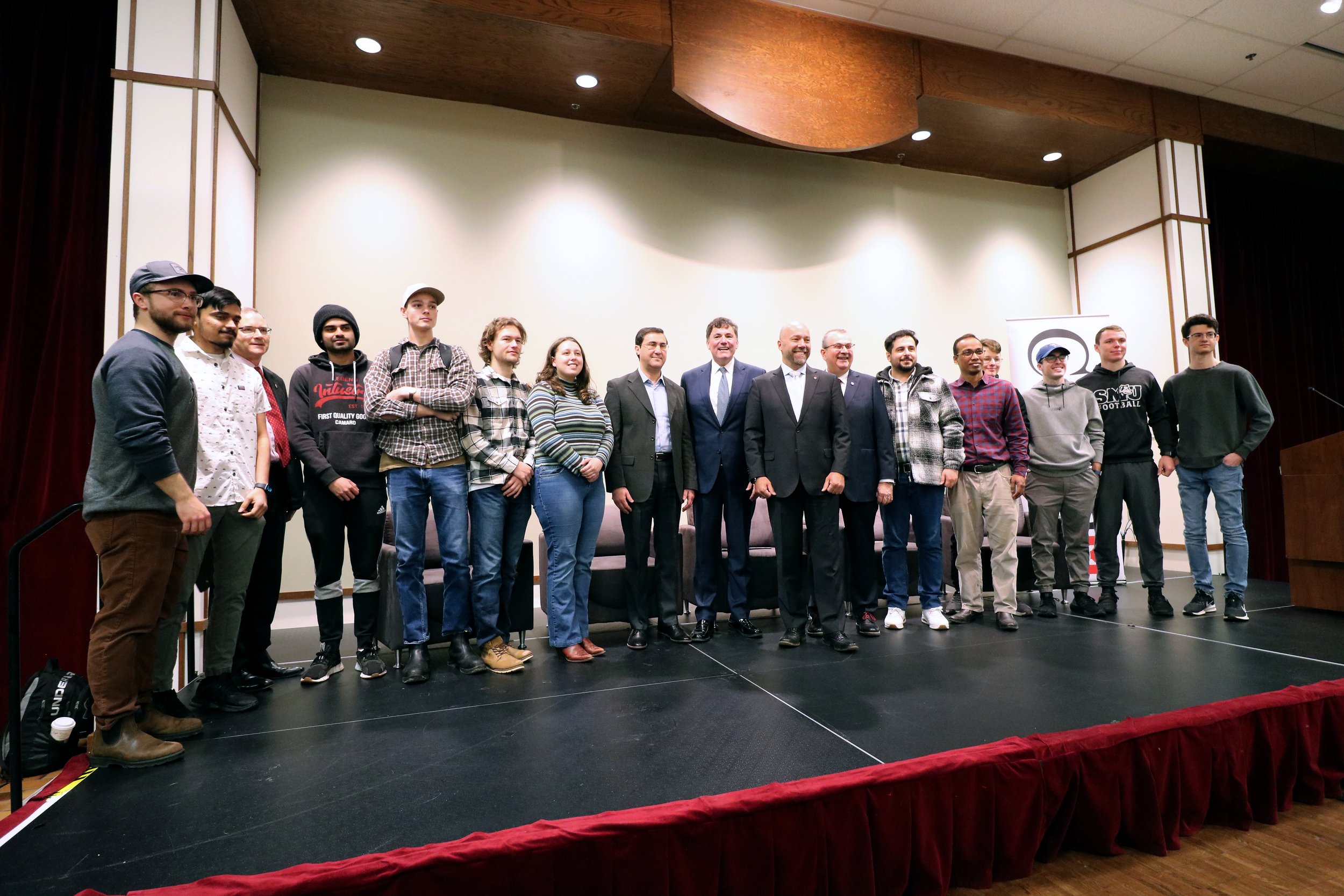
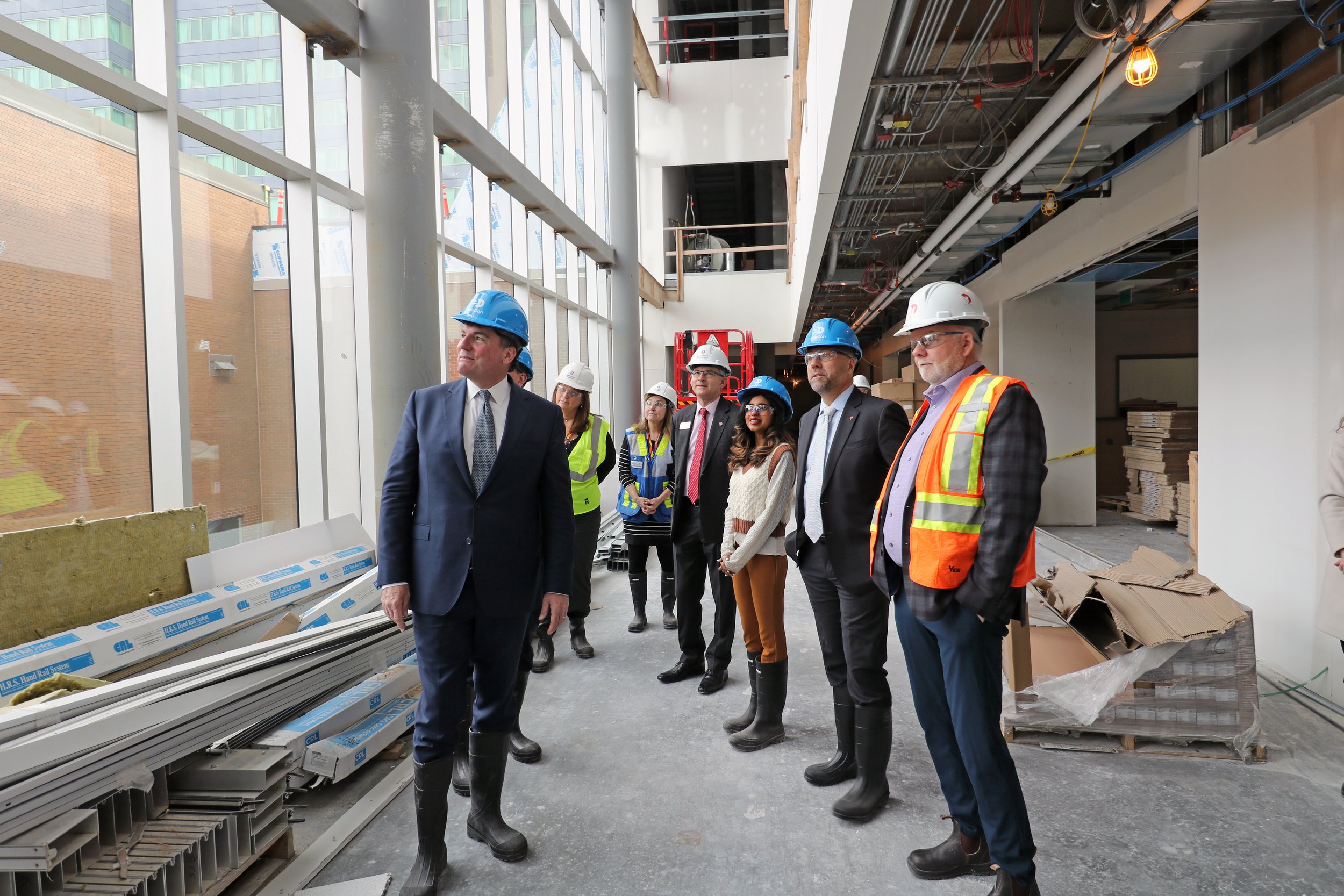
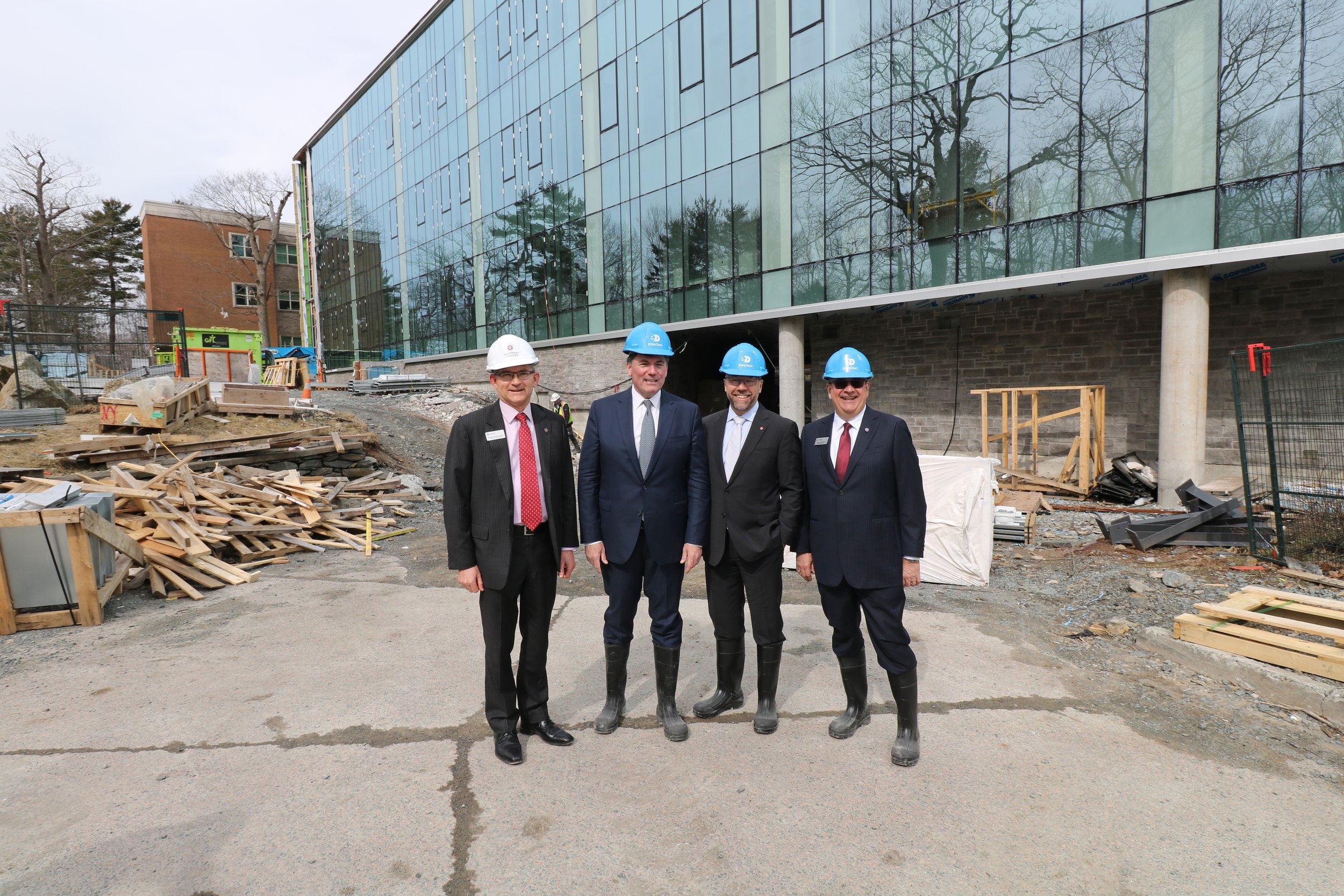
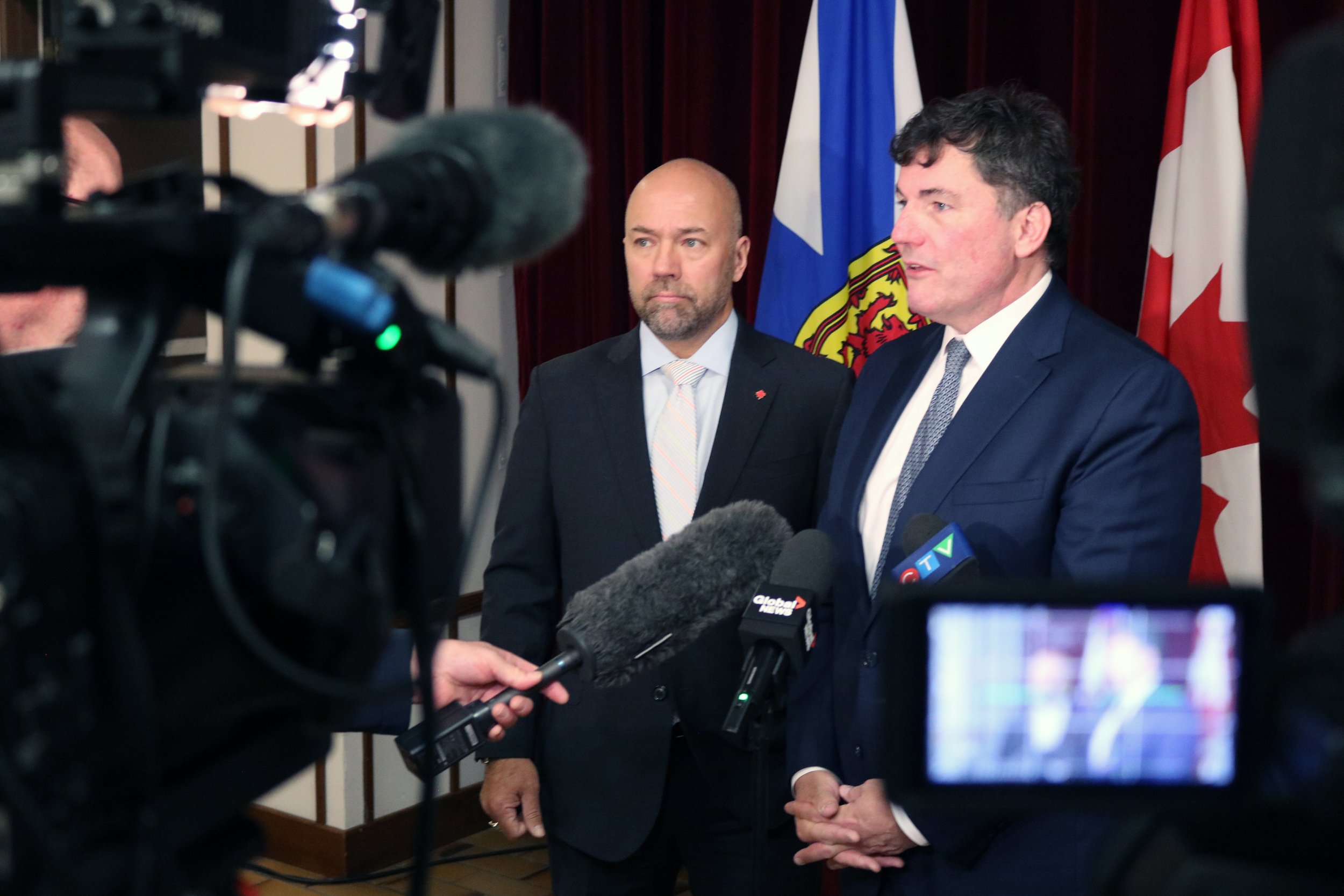
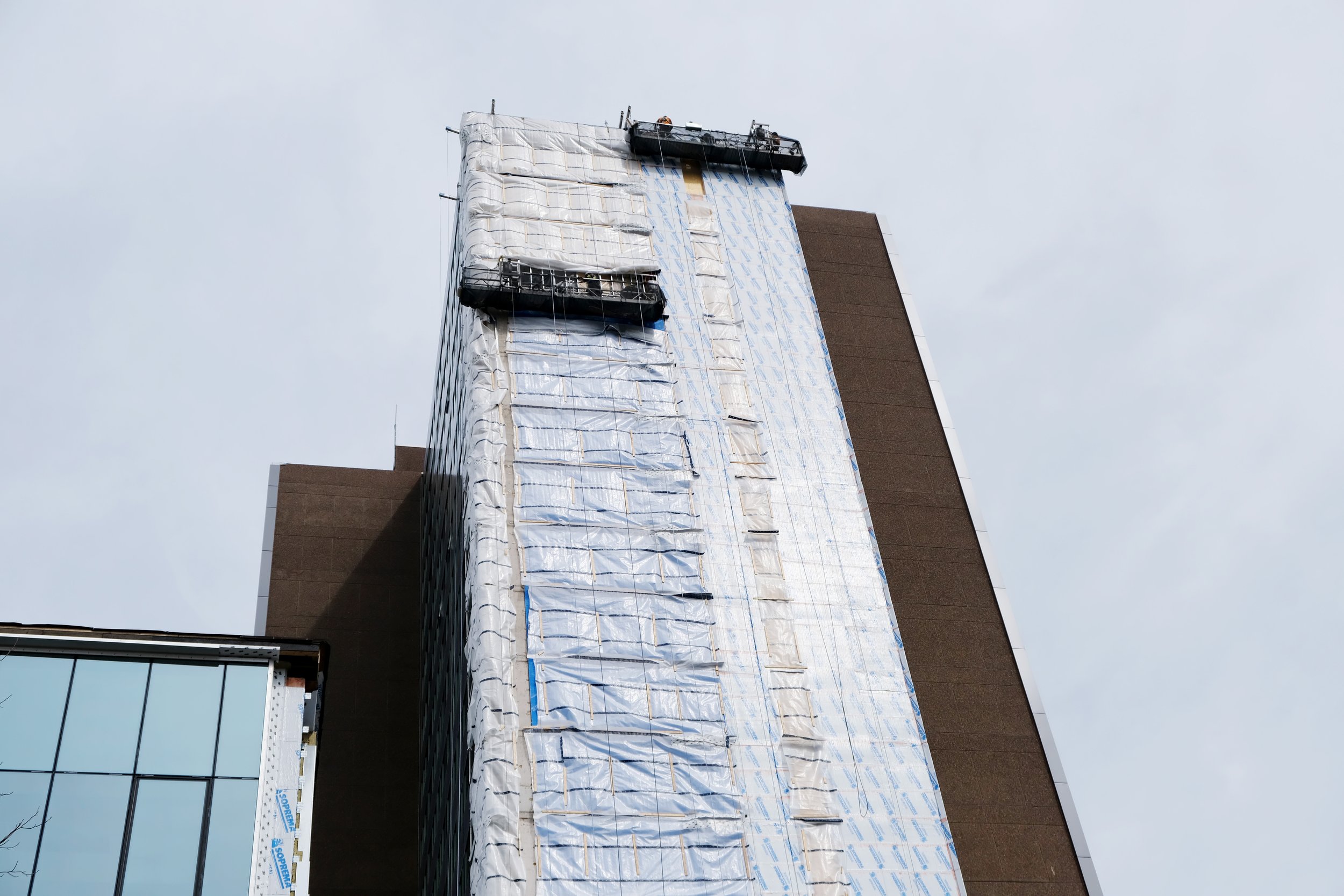
It was standing room only for the announcement of a $20-million investment in green technology and green energy generation from the Government of Canada and Saint Mary’s University on April 4, 2023.
Hundreds of Saint Mary’s faculty, students, staff and community members received the news from the Honourable Dominic LeBlanc, Minister of Intergovernmental Affairs, Infrastructure and Communities, and Andy Fillmore, Parliamentary Secretary to the Minister of Innovation, Science and Industry and Member of Parliament for Halifax, at a packed Loyola Conference Hall.
“Saint Mary’s University has an extensive track record of equipping Nova Scotians, Canadians and students from around the world with the tools they need to succeed in their careers, particularly in the business sector,” says The Honourable Dominic LeBlanc, Minister of Intergovernmental Affairs, Infrastructure and Communities. “These investments will improve the working and learning environment of every member of the university community, enhancing knowledge sharing and collaboration among the leaders of tomorrow’s green economy.”
A significant component of this investment is enhancements to the Sobeys Inspiration Hub, a new four-storey building currently under construction. The Sobeys Inspiration Hub is creating a new space for possibility, bringing together the energy and diversity of our students, world-class researchers and the industry-leading work of the Arthur L. Irving Entrepreneurship Centre with the expertise of our region’s expanding business community. The new additions include solar panels, integrated audio-visual communications technology and landscaping work. Construction in the interior of the Hub will enhance integration and collaboration among users.
“Universities are at the forefront of producing and researching green energy. We are essential partners in the fight against climate change,” says Dr. Robert Summerby-Murray, President and Vice-Chancellor of Saint Mary’s University. “I want to thank the Government of Canada for its investment in Saint Mary’s University and our initiatives to reduce our carbon footprint as we move towards net zero. We are leading Atlantic Canada in this space, and with this investment, we will continue to advance a greener community and campus.”
Enhancements as part of this investment in the Saint Mary’s campus include green technology additions to the Loyola Building, the Homburg Centre for Health & Wellness, the Patrick Power Library, the Burke Theatre and the McNally Theatre Auditorium. This includes new solar panels, a green roof and other energy-efficiency features for many of those buildings.
“I want to thank Minister LeBlanc and the Government of Canada for their commitment to renewable energy and supporting carbon reduction and green infrastructure at Saint Mary’s University,” says Alan R. Abraham, Jr. BComm’80, Chair of the Saint Mary’s University Board of Governors. “The Sobeys Inspiration Hub is a dynamic new space coming to Saint Mary’s. This investment will reduce its carbon footprint and support expanding our green energy production on campus.”
Saint Mary’s is a leader in carbon reduction and producing green energy in the East Coast post-secondary sector. These upgrades will more than double the university’s renewable energy production on campus.
Additional resources:

